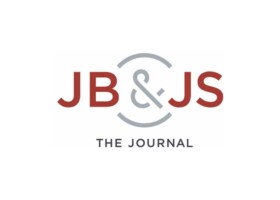
Authors:
Simon A Euler, Ulrich J A Spiegl, Peter J Millett
Abstract:
Acute traumatic posterior glenohumeral dislocations are rare; they are typically caused by high-velocity trauma, epileptic seizures, or electrocution . Anterior impression fractures of the humeral head (reverse Hill-Sachs defect) occur in over 80% of individuals following a posterior dislocation of the shoulder. The size of reverse Hill-Sachs defects varies and has been reported to be as large as 55% of the cartilage surface. Defects affecting less than 10% of the articular surface can be treated conservatively with closed reduction, and immobilization may produce excellent stability with a low risk for redislocation. However, traditional sling immobilization in internal rotation puts the shoulder at risk to redislocate. Therefore, surgical treatment is recommended in defects that affect between 10% and 20% of the articular surface; they can be treated either with an arthroscopic approach, open remplissage, bone-grafting, or prosthetic replacement.
Compared with traditional posterior Hill-Sachs defects that occur with anterior dislocations, the extent of osseous and cartilaginous destruction of the anterior humeral head is usually more extensive in reverse Hill-Sachs defects. Therefore, to stabilize the glenohumeral joint and avoid potential progressive cartilage destruction, which may lead to early osteoarthritis, reverse Hill-Sachs defects affecting more than 20% of the articular surface are nearly always treated surgically. Several techniques have been described, including subscapularis transfer with or without the lesser tuberosity into the humeral head defect, disimpaction and bone-grafting, allograft reconstruction of the humeral articular surface, and arthroplasty. If the joint becomes unstable, repair of the posterior capsulolabral structures can be performed to restore stability, as described for treatment of symptomatic posterior subluxation. Large defects of greater than 40% of the articular surface typically require initial arthroplasty because of the increased risk of osteoarthritis, humeral head necrosis, and mechanical symptoms or instability.
We present a clinical case of a reverse Hill-Sachs defect that involved more than 30% of the articular surface. It was successfully treated with combined arthroscopic posterior labral repair; capsulorrhaphy; open disimpaction of the fracture, which was augmented with mineralized subchondral cancellous allograft bone; and internal screw fixation of a humeral head impaction fracture.
The patient was informed that data concerning the case would be submitted for publication, and he provided consent.
For the complete study: Posterior Shoulder Instability with a Reverse Hill-Sachs Defect: Repair with Use of Combined Arthroscopic Labral Repair and Fracture Disimpaction
